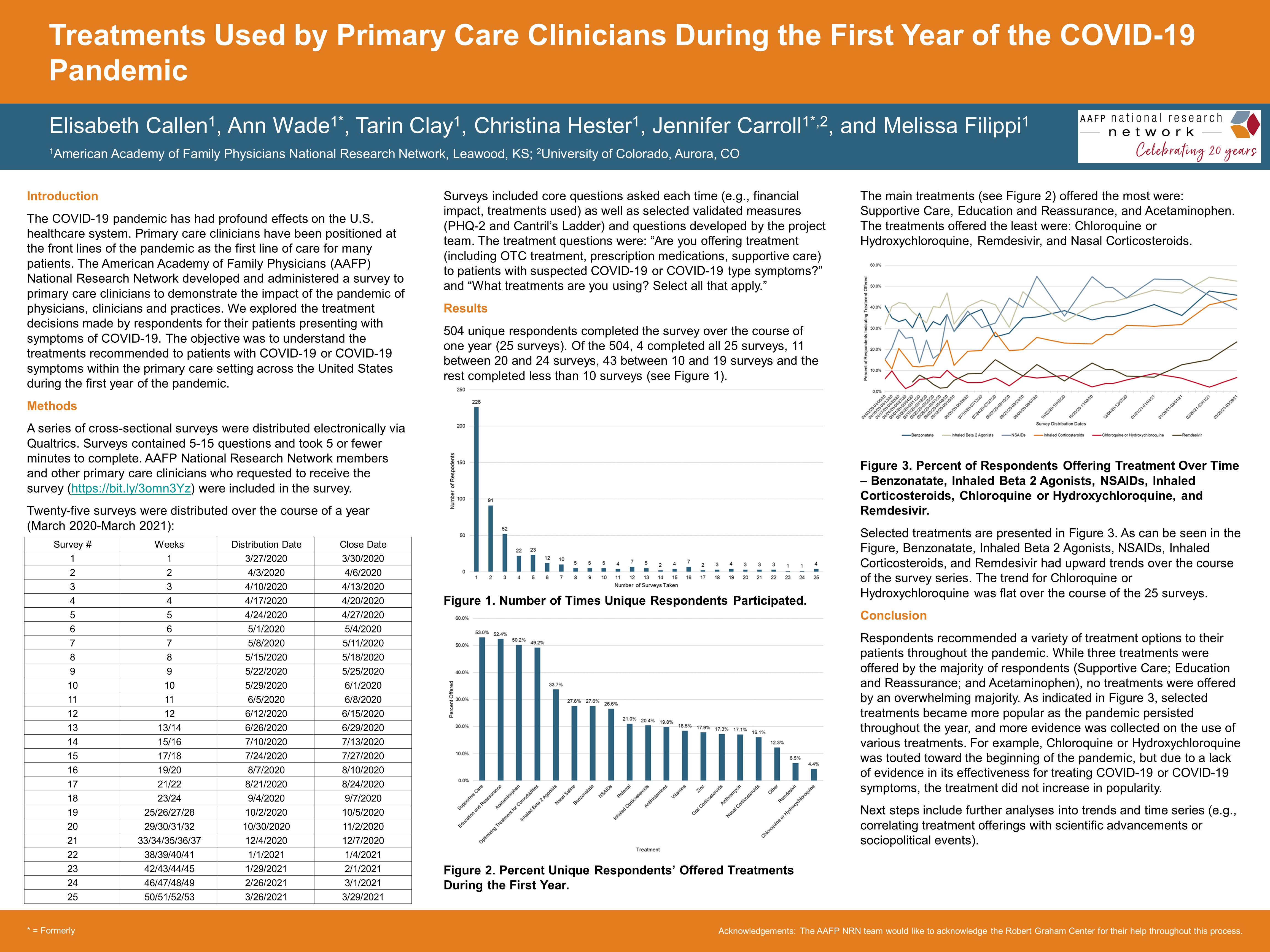PRP093: Treatments Used by Primary Care Clinicians During the First Year of the COVID-19 Pandemic
Elisabeth Callen, PhD; Melissa Filippi, PhD, MPH; Ann Wade; Christina Hester, PhD, MPH
Abstract
Context: The COVID-19 pandemic has had profound effects on the US healthcare system. Due to primary care’s unique positioning as being the first line of care for patients, it is of upmost importance to understand COVID-19’s impact on primary care clinicians and practices. The American Academy of Family Physicians (AAFP) National Research Network developed a survey for members and partners to help understand the impact of the pandemic on physicians, clinicians and practices, including treatment decisions made for patients with COVID-19. Objective: To understand the treatments provided to patients with COVID-19 within the primary care setting across the United States. Study Design: Longitudinal surveys. Setting or Dataset: AAFP National Research Network members, Robert Graham Center stakeholders, selected American Academy of Family Physicians members. Population Studied: AAFP National Research Network members and other primary care clinicians who signed up to receive the survey through a distributed anonymous link. Intervention/Instrument: Twenty-five surveys over the course of a year that included validated measures as well as questions developed by the project team. A question on treatments that respondents used for their patients with COVID-19 was included on every survey. Outcome Measures: Treatment options provided by survey respondents over the course of 25 surveys/one year. Results: 504 unique respondents completed the survey over the course of one year (25 surveys). Of the 504, 4 completed all 25 surveys, 11 completed between 20 and 24 surveys, 43 completed between 10 and 19 surveys, and the rest completed less than 10 surveys. The main treatments for COVID-19 the 504 respondents indicated they used the most were: supportive care (53.0%), education and reassurance (52.4%), acetaminophen (50.2%), optimizing treatment for comorbidities (49.2%), and inhaled beta 2 agonists (33.7%). The treatments used the least were: chloroquine or hydroxychloroquine (4.4%), remdesivir (6.5%), and nasal corticosteroids (16.1%). Conclusions: Results from the survey question on the treatments used for patients with COVID-19 will provide information to determine the impact of the differing treatments used throughout the pandemic.

Nadir
11/19/2021This is imteresting